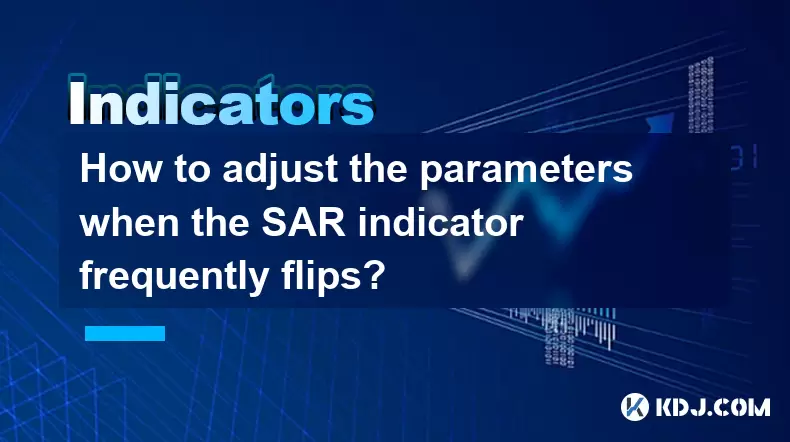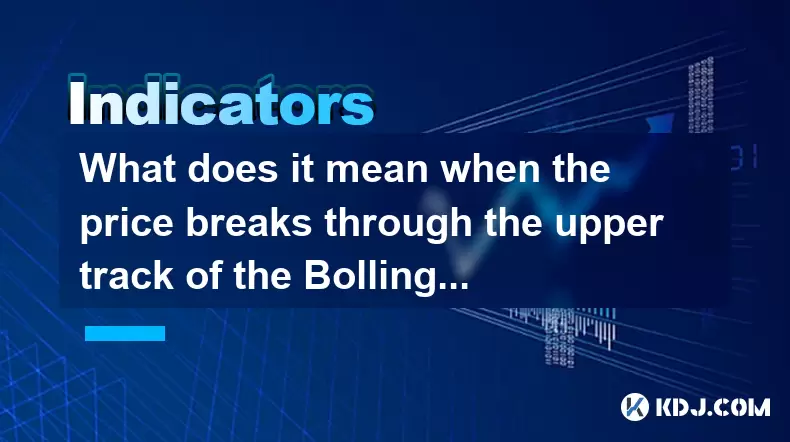-
 Bitcoin
Bitcoin $117500
-0.66% -
 Ethereum
Ethereum $3760
-1.24% -
 XRP
XRP $3.087
-2.54% -
 Tether USDt
Tether USDt $0.9999
-0.01% -
 BNB
BNB $803.6
-4.03% -
 Solana
Solana $180.3
-4.15% -
 USDC
USDC $0.9998
-0.01% -
 Dogecoin
Dogecoin $0.2218
-4.92% -
 TRON
TRON $0.3366
3.71% -
 Cardano
Cardano $0.7785
-3.73% -
 Hyperliquid
Hyperliquid $42.90
-4.75% -
 Sui
Sui $3.797
-7.45% -
 Stellar
Stellar $0.4165
-2.32% -
 Chainlink
Chainlink $17.65
-4.17% -
 Bitcoin Cash
Bitcoin Cash $561.0
-3.86% -
 Hedera
Hedera $0.2611
-4.54% -
 Avalanche
Avalanche $24.33
-7.02% -
 UNUS SED LEO
UNUS SED LEO $8.972
0.06% -
 Litecoin
Litecoin $107.6
-2.79% -
 Toncoin
Toncoin $3.254
-1.84% -
 Shiba Inu
Shiba Inu $0.00001306
-4.69% -
 Ethena USDe
Ethena USDe $1.001
0.00% -
 Uniswap
Uniswap $10.10
-4.83% -
 Polkadot
Polkadot $3.902
-4.63% -
 Monero
Monero $315.1
-2.57% -
 Dai
Dai $1.000
0.02% -
 Bitget Token
Bitget Token $4.499
-2.53% -
 Pepe
Pepe $0.00001145
-7.38% -
 Cronos
Cronos $0.1479
6.07% -
 Aave
Aave $281.3
-4.07%
How to adjust the parameters when the SAR indicator frequently flips?
Adjusting the SAR's acceleration factor and combining it with ATR or moving averages reduces false flips and improves accuracy in trending markets.
Jul 29, 2025 at 04:01 am

Understanding the SAR Indicator and Its Functionality
The Parabolic SAR (Stop and Reverse) indicator is a technical analysis tool used primarily to identify potential reversals in market price movement. It appears as a series of dots placed either above or below the price candles on a chart. When the dots are below the price, it signals an uptrend, and when they are above, it indicates a downtrend. The core formula behind SAR involves an acceleration factor (AF) and an extreme point (EP), which dynamically adjust with each new high or low in the trend.
One of the most common issues traders face is the frequent flipping of the SAR indicator, especially in choppy or sideways markets. This occurs when the price oscillates within a narrow range, causing the SAR dots to switch sides repeatedly. Such behavior can lead to false signals and premature entries or exits. To address this, adjusting the underlying parameters of the SAR becomes essential.
Default SAR Parameters and Their Impact
By default, most trading platforms set the SAR’s initial acceleration factor at 0.02, with a maximum value of 0.2. The acceleration factor increases by 0.02 each time a new extreme point (highest high in an uptrend, lowest low in a downtrend) is reached. As the AF grows, the SAR dots accelerate toward the price, making the indicator more sensitive.
In a trending market, this sensitivity helps lock in profits by trailing the price closely. However, in volatile or ranging conditions, the rapid acceleration causes the SAR to flip too often. Traders may observe the indicator switching direction on nearly every candle, which undermines its utility. Therefore, understanding how each parameter influences the behavior is crucial before making adjustments.
Adjusting the Acceleration Factor for Stability
To reduce the frequency of SAR flips, the primary parameter to modify is the acceleration factor (AF). Lowering the step increment and the maximum value can significantly stabilize the indicator.
- Set the initial AF to 0.01 instead of 0.02
- Reduce the increment step to 0.01 per new extreme point
- Cap the maximum AF at 0.1 or 0.15 instead of 0.2
These changes make the SAR less reactive to short-term price fluctuations. For example, on the MetaTrader 4 or 5 platform, right-click on the SAR indicator, select “Properties,” and navigate to the “Parameters” tab. Modify the “Step” value to 0.01 and the “Maximum” to 0.1. Click “OK” to apply. On TradingView, click on the “SAR” indicator in the chart’s indicator window, open the settings, and adjust the “Step” and “Maximum” fields accordingly.
This slower acceleration delays the convergence of SAR dots toward the price, reducing the likelihood of premature reversals during consolidation phases.
Combining SAR with Volatility Filters
Even with adjusted parameters, SAR may still flip frequently in low-trend environments. A robust solution is to combine SAR with a volatility-based filter such as the Average True Range (ATR) or Bollinger Bands.
Using ATR:
- Calculate the 14-period ATR on the same chart
- Only consider a SAR flip valid if the price movement exceeds 1.5 times the ATR value
- This ensures that reversals are backed by significant momentum, not noise
Using Bollinger Bands:
- Apply a 20-period Bollinger Band with 2 standard deviations
- Ignore SAR signals that occur when the price is between the middle (SMA) and upper/lower bands
- Only act on SAR flips when the price closes beyond the outer bands, indicating a stronger trend shift
These filters add a layer of confirmation, ensuring that SAR reversals are not triggered by minor price wiggles.
Timeframe Selection to Minimize False Flips
Another effective method to reduce SAR flipping is adjusting the chart timeframe. The SAR behaves more reliably on higher timeframes due to reduced market noise.
- Switch from a 5-minute chart to a 1-hour or 4-hour chart
- Observe SAR behavior: fewer dots, less frequent direction changes
- Use the higher timeframe SAR signal to guide entries on lower timeframes
For instance, if the SAR on the 4-hour chart shows a sustained uptrend (dots below price), only take long positions on the 15-minute chart, ignoring any short signals generated by SAR flips. This top-down approach aligns trades with the dominant trend and filters out counter-trend noise.
Optimizing SAR with Additional Confirmation Indicators
To further refine SAR signals, integrate it with trend-confirming indicators such as Moving Averages or MACD.
Using Moving Averages:
- Apply a 50-period and 200-period Exponential Moving Average (EMA)
- Only accept a SAR flip if the price is also on the correct side of the EMAs
- For a bullish SAR flip, ensure the price is above both EMAs
Using MACD:
- Monitor the MACD line and signal line crossover
- A SAR flip is only valid if it coincides with a MACD crossover in the same direction
- Avoid acting on SAR reversals when MACD is flat or moving against the SAR signal
These combinations prevent over-reliance on a single indicator and increase the probability of accurate trade setups.
Frequently Asked Questions
Can I disable SAR flips completely?
No, the SAR is inherently designed to reverse when the price crosses the dot level. However, you can reduce flip frequency by adjusting the acceleration factor and using filters. Completely disabling flips would defeat the purpose of the indicator.
What is the best market condition for using SAR?
The Parabolic SAR performs best in strong trending markets. It is less effective in ranging or highly volatile sideways markets. Always assess the market structure before relying on SAR signals.
Does changing SAR parameters affect backtesting results?
Yes, modifying the step and maximum values will alter historical signal generation. Always retest your strategy with the new parameters on historical data to evaluate performance changes.
Is SAR suitable for scalping strategies?
SAR can be used for scalping, but the default settings may generate too many false signals. For scalping, consider using a lower maximum AF (e.g., 0.1) and combine it with tick volume or order flow confirmation to improve accuracy.
Disclaimer:info@kdj.com
The information provided is not trading advice. kdj.com does not assume any responsibility for any investments made based on the information provided in this article. Cryptocurrencies are highly volatile and it is highly recommended that you invest with caution after thorough research!
If you believe that the content used on this website infringes your copyright, please contact us immediately (info@kdj.com) and we will delete it promptly.
- Bitcoin Price Drop: Navigating the Dip with Corporate Strategies
- 2025-07-30 07:30:12
- BNB's Bullish Cycle: ChatGPT Weighs In on the Future
- 2025-07-30 06:50:12
- XRP's Wild Ride: Open Interest, Price Crash Fears, and What's Next
- 2025-07-30 07:50:12
- SEC Greenlights In-Kind Creations: A Game Changer for Bitcoin ETPs?
- 2025-07-30 07:50:12
- Arbitrum (ARB) Price Prediction: Navigating the Ups and Downs of the Best ETH Eco
- 2025-07-30 06:50:12
- Ethereum, Ruvi AI, Presale: The Next Big Thing in Crypto?
- 2025-07-30 07:30:12
Related knowledge

What does it mean when the EMA combination crosses upward for the first time after sideways trading?
Jul 28,2025 at 03:43pm
Understanding the EMA and Its Role in Technical AnalysisThe Exponential Moving Average (EMA) is a widely used technical indicator in cryptocurrency tr...

What does it mean when the price breaks through the upper track of the Bollinger Band but the RSI is overbought?
Jul 30,2025 at 03:35am
Understanding Bollinger Bands and Their Upper TrackBollinger Bands are a widely used technical analysis tool developed by John Bollinger. They consist...

What signal does the ROC send when it rises rapidly from a low level and breaks through the zero axis?
Jul 27,2025 at 10:15am
Understanding the Rate of Change (ROC) IndicatorThe Rate of Change (ROC) is a momentum-based oscillator used in technical analysis to measure the perc...

What does it mean when the moving averages are glued together and a gap appears?
Jul 29,2025 at 07:49pm
Understanding Moving Averages in Cryptocurrency TradingMoving averages are among the most widely used technical indicators in the cryptocurrency tradi...

What does it mean when TEMA breaks through the long-term downward trend line?
Jul 29,2025 at 02:50pm
Understanding the Role of Smart Contracts in Decentralized Finance (DeFi)Smart contracts are self-executing agreements with the terms of the agreement...

What does it mean when the price breaks through the double bottom neckline and the moving averages are arranged in a bullish pattern?
Jul 28,2025 at 10:57am
Understanding the Double Bottom PatternThe double bottom is a widely recognized reversal chart pattern in technical analysis, particularly within the ...

What does it mean when the EMA combination crosses upward for the first time after sideways trading?
Jul 28,2025 at 03:43pm
Understanding the EMA and Its Role in Technical AnalysisThe Exponential Moving Average (EMA) is a widely used technical indicator in cryptocurrency tr...

What does it mean when the price breaks through the upper track of the Bollinger Band but the RSI is overbought?
Jul 30,2025 at 03:35am
Understanding Bollinger Bands and Their Upper TrackBollinger Bands are a widely used technical analysis tool developed by John Bollinger. They consist...

What signal does the ROC send when it rises rapidly from a low level and breaks through the zero axis?
Jul 27,2025 at 10:15am
Understanding the Rate of Change (ROC) IndicatorThe Rate of Change (ROC) is a momentum-based oscillator used in technical analysis to measure the perc...

What does it mean when the moving averages are glued together and a gap appears?
Jul 29,2025 at 07:49pm
Understanding Moving Averages in Cryptocurrency TradingMoving averages are among the most widely used technical indicators in the cryptocurrency tradi...

What does it mean when TEMA breaks through the long-term downward trend line?
Jul 29,2025 at 02:50pm
Understanding the Role of Smart Contracts in Decentralized Finance (DeFi)Smart contracts are self-executing agreements with the terms of the agreement...

What does it mean when the price breaks through the double bottom neckline and the moving averages are arranged in a bullish pattern?
Jul 28,2025 at 10:57am
Understanding the Double Bottom PatternThe double bottom is a widely recognized reversal chart pattern in technical analysis, particularly within the ...
See all articles

























































































